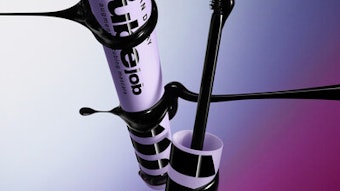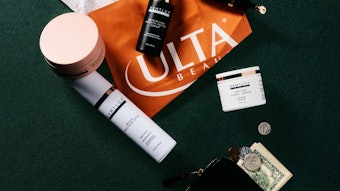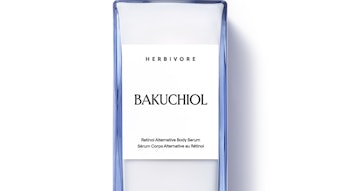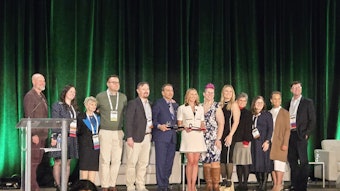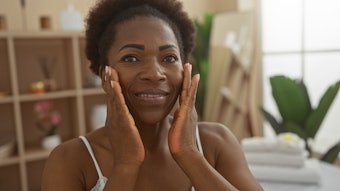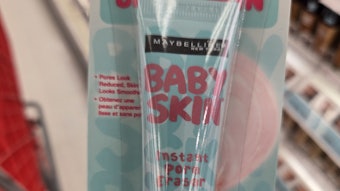Skin color varies greatly around the world, and desired skin color is often dependent on regional habits and practices that denote healthy skin. There is always a need to modulate the appearance of skin color and its uniformity. This can be done by adapting the amount of melanin in the skin; maintaining the appearance of healthy skin by using suitable UV absorbers/reflectants, darkening of the skin with self-tanning actives such as dihydroxyacetone (DHA) and lightening the skin by inhibiting the melanogenesis activity of tyrosinase.
Skin color is primarily determined by the amount of melanin, a brown-black pigment, present in the skin. Due to the dark color of the pigment, lower amounts of melanin result in lighter skin color while higher amounts result in darker skin color. Melanin is formed by the oxidation of the amino acid tyrosine to dihydroxyphenalanine in melanocytes, which is catalyzed by the enzyme tyrosinase.
The term “skin lightening” has been positioned in the cosmetic market to denote the return of skin’s color to a more natural transparent tone, providing a more even skin tone and lighter skin pigment. Topical skin lighteners suppress production of melanin pigment, prevent darkening of the skin or modify pigmentation such as blotches and freckles.
Key Skin Lighteners
Current treatments for hyperpigmentation include: topical sunscreens, which prevent tyrosinase activity; compounds such as hydroquinone, which either inhibit the enzyme tyrosinase to reduce the conversion of DOPA to melanin or destroy melanocytes, degrade melanosomes and inhibit of the synthesis of DNA and RNA; exfoliation and keratolytic action; inhibition of melanocyte transfer to keratinocytes using a compound such as niacinamide; inhibition of tyrosinase; and combinations of such treatments. The two more popular and globally recognized skin-lightening ingredients are arbutin (hydroquinone) and kojic acid.
One approach to skin lightening is through tyrosinase inhibitors with ingredients such as hydroquinone, vitamin C and its derivatives, kojic acid, arbutin, glutathione, cysteine and mulberry extract, among others. Some synthesized skin lighteners, such as hydroquinone or kojic acid, have been found to cause skin irritation or acute dermatitis. Therefore, there is a continuing desire to incorporate natural skin-lightening actives into skin care compositions in an attempt to address some of the undesirable aspects of synthetic products.
There are a number of other, less efficacious skin-lightening ingredients utilized in global product launches. They can include skin de-pigmenting peroxide agents, such as hydrogen peroxide, zinc peroxide, sodium peroxide and benzoyl peroxide. However, peroxide activity often is coupled with adverse side effects, so they have limited application. Skin lighteners can also be natural compounds said to partially inhibit melanin synthesis and/or tyrosinase activity. For example, glucosamines, galactosamines, mannosamines and some plant extracts have been found to block free radicals, which are the true stimulating factors of melanogenesis. Plant extracts can suffer from the disadvantages of instability, a lack of standardized product and low efficacy.
Antioxidants, such as vitamins C and E, and esters thereof, also exhibit moderate de-pigmenting activity, with partial inhibition of melanogenesis. However, such antioxidants typically are not sufficiently efficacious. In addition, to prevent premature browning of the composition, a stabilized, less effective derivative of vitamin C typically is used such as magnesium ascorbyl phosphate or sodium ascorbyl phosphate.
Azelaic acid also has been used as a de-pigmenting agent because it demonstrates a competitive inhibition of tyrosinase and DNA synthesis within melanocytes. Another option, ferulic acid, is a relatively non-efficacious tyrosinase inhibitor. Finally, glabridin (licorice extract) suffers from instability and purity concerns and is associated with a high cost. These tyrosinase inhibitors also suffer from relatively low efficacy because of poor skin permeation to melanocytes.
Featured Ingredients: Hydroquinone (Arbutin) and Kojic Acid
Hydroquinone,shown in Figure 1, and its derivatives, such as the monomethyl ether of hydroquinone and arbutin, are some of the most common de-pigmenting agents used in topical compositions.
Hydroquinone interrupts the production of melanin by inhibiting the tyrosinase enzyme. Hydroquinone is a tyrosinase substrate with antagonist and competitive action on tyrosine. It is highly effective, but there are concerns relating to the toxicity of hydroquinone, and many countries have banned its use except under the care of a dermatologist.
Prescription skin-lightening compositions may contain 3–5% w/w hydroquinone; however, the dosage typically is limited to 2% w/w hydroquinone, as the material is unstable and irritating. It is also cytotoxic to melanocytes with indications of localized granular hyperpigmentation and formation of elastosis as well as the occurrence of vitiligo after long-term use.
Many current treatments contain a derivative of hydroquinone called arbutin, with its pure forms being alpha-arbutin, beta-arbutin and deoxy-arbutin.1 The pure forms of arbutin are considered more potent and can be found in low concentrations in a variety of extracts including Mitracarpus scaber extract, Uva ursi (bearberry) extract, Morus bombycis (mulberry), Morus alba (white mulberry) and Broussonetia papyrifera (paper mulberry). Alpha-arbutin is replacing arbutin for skin lightening because it is more effective and more stable. Arbutin derivatives alpha-arbutin, beta-arbutin, and deoxy-arbutin also are available as a neat compound. Pure arbutin is expensive and requires high concentrations to be effective (e.g., greater than 1% w/w in formulations), which limit arbutin and derivatives to a minority of the products on the market. Another tyrosinase inhibitor is kojic acid (shown in Figure 2), which is unstable, exhibits weak mutagenicity, and is a skin sensitizer/irritant. Kojic acid is a leading active agent used today for skin lightening. It is fungi-derived and can exhibit some disadvantages including: instability, e.g., undergoes photodegradation in time that reduces efficacy; a tendency to discolor from yellow to brown in formulations in time; mutagenicity and tumor promotion; irritation with sensitization potential; and a provocation of skin contact allergies. A derivative of kojic acid, known as kojic acid dipalmitate, has been shown to be stable in formulations, but no conclusive evidence of skin-lightening efficacy has been shown.
Recent Skin-lightening Patents
Recent patents related to skin lightening include pomegranate melanin reduction, reducing retinoid irritation, dopa oxidase inhibitor and a resorcinol skin lightener, which are described here.
Pomegranate melanin reduction: Natural skin lighteners are becoming increasingly popular, as formulators look for alternatives to some irritating synthetic skin lighteners. Disclosed is a topical cosmetic composition for increasing skin whitening or lightening that is formulated with a pomegranate extract in an amount effective to reduce melanin composition.2 The pomegranate extract may be standardized to about 20% punicalagins, which are large polyhenol tannin compounds. The composition may also include an extract from the genus larix, such as Larix sibirica. L. sibirica may be standardized to 80% taxifolin, a flavanonol.
Reducing retinoid irritation in skin lightening: The present invention relates to improved cosmetic and dermatological compositions that treat hyperpigmented mammalian skin by lightening its color.3 The compositions demonstrate an enhanced ability to lighten skin color through use of a polymeric microparticle delivery system to help reduce the irritation associated with relatively high concentrations of a retinoid. Effective skin lightening is achieved by combining a polymeric microparticle-entrapped retinoid with a second skin-lightening agent, such as kojic acid or a derivative thereof (kojic acid dipalmitate), in an emulsion composition. The efficacy of a present composition is equivalent to or near equivalent to the industry standard for skin lightening obtained by applying a composition containing hydroquinone. The method is capable of lightening dark skin attributed to age spots or a melasma.
Dopa oxidase inhibitor: The present invention lightens skin by inhibiting dopa oxidase activity, thereby suppressing melanin production.4 The dopa oxidase inhibitor comprises an extract of at least one plant selected from the group consisting of: Melia toosendan Sieb. et Zucc., Amomum tsao-ka Crevost et Lemaire, Senecio gracilis and Veratrum nigrum L. as an active ingredient.
Resorcinol skin lightener and 1,3 dihydroxybenzene skin tanner: The invention provides a composition comprising a skin-lightening resorcinol and a skin-darkening agent.5 The skin-lightening resorcinol is a dihydroxy phenol compound such as 1,3-dihydroxybenzene, whereas the skin-darkening agent enhances melanin similar to agents such as dihydroxyacetone.The invention provides a method of treating skin aging using the composition.
Recent Commercial Product Launches
The following skin-lightening products were chosen to demonstrate the breadth of skin-lightening actives used around the world, both natural and synthetic.
Decléor Excellence de l’Âge Face & Hands Dark Spot Corrector: This dark spot corrector, shown in Figure 3, is said to brighten dark spots, even out the complexion and leave the skin radiant and youthful. It has been formulated with a concentrated vitamin C derivative to correct the complexion; bellis extract to reduce existing pigment spots; antioxidants white grape and maritime pine polyphenols, to combat the appearance of new pigment spots; the company’s Light Balance Plant Complex to preserve the skin’s transparency and protect microcapillaries to keep redness to a minimum; iris concentrate to help promote cell renewal to smooth the skin and reduce the appearance of wrinkles; and hydrating frankincense, immortelle, chamomile and the company’s Sol-Collagenine complex for its firming properties. The spot corrector also contains aurone extract to deliver a lifting effect by enhancing the natural production of lipids, re-shaping facial contours and plumping lines; and the company’s Patch-Effect technology for its wrinkle-firming action. The formula for the treatment is shown in Table 1. The treatment is said to also deliver aromatherapeutic benefits and features a beveled applicator designed to provide an ultra-precise, simple and rapid application.
Sunulan Ossein Rebirthing Face Masks: These masks, shown in Figure 4, are said to whiten, make skin translucent, replenish moisture, leave skin resilient, remove wrinkles, provide more even skin tones, tighten pores, revitalize skin and stimulate collagen production and elastin fiber. Olive oil and jojoba oil are incorporated to enhance skin softness, and kojic acid is utilized to provide a more uniform skin tone and color. The product’s formulation is shown in Table 2.
Jan Marini Enlighten Plus Face Lotion: Jan Marini Skin Care Management System Age Intervention is a five-step system said to utilize synergistic layered technology to measurably improve the appearance of common skin conditions such as fines lines and wrinkles, discoloration, acne, rosacea and sun damage. The range’s third step is Enlighten Plus Face Lotion (see Figure 5), which is described as the only product with concentrated retinol, antioxidants and multiple skin lightening-technologies. It is said to combat signs of aging caused by sun damage, wrinkles and hyperpigmentation and features ingredients, shown in Table 3 on Page 616, that target textural concerns and provide multifaceted resurfacing needs. The product contains an advanced non-hydroquinone formulation to deliver rapid improvement with long-term control; multiple individually proven key technologies to focus on individual aspects of discoloration for maximum improvement; botanical ingredients; and vitamins A and C.
Jolie MD Metamorphosis Enlightening Lotion: Jolie MD’s Metamorphosis is a two-product system developed by facial surgeons Jason Litner, MD, and Peyman Solieman, MD, in collaboration with beauty expert Nadine Jolie. The system offers Softening Serum and Enlightening Lotion, which are designed to provide smoother and brighter skin, free of acne, fine lines and discoloration. The Metamorphosis Enlightening Lotion, pictured in Figure 6, is a soothing blend of antioxidants and anti-inflammatory botanicals to moisturize, reduce redness, increase collagen production and even out the skin tone, while reducing oily skin. The formulation is shown in Table 4.
Lakmé Sun Expert After Sun Skin Lightening Mask: This mask, shown in Figure 7, is a clay-based after-sun product that claims to visibly lighten skin that has been darkened by sun exposure. The formulation, detailed in Table 5, features cucumber and lemon grass extracts. It is said to rinse off easily, leaving skin soothed, and impart a clean, fresh feel.
Formulator Beware
Even though skin lightening is an important category, and in some cultures represents healthier skin or upper class society, the ingredients used to provide skin lightening continue to come under fire for potential negative health effects. Therefore, stringent safety testing is required to maintain not only healthy-looking skin, but healthy skin. The trend is to find natural extracts that can synergistically provide inhibition of the tyrosinase enzyme. A number of skin-lightening compounds have been partially or completely banned because of toxicity and environmental concerns. For example, mercury, hormonal preparations and oxidizing agents have been banned as skin-lightening agents.
Formulating with kojic acid requires a few precautions. Dionized water and a small amount of an iron chelating agent such as disodium EDTA should be added to water before kojic acid. A small amount of ascorbic acid and sodium bisulfate can be incorporated to stabilize kojic acid from oxidation and potential yellowing of the formula over time.
Combining skin-lightening agents is possible and the commercial formulas presented demonstrate a few combinations, specifically the combinations of niacinamide with an ascorbyl derivative or with mulberry and bearberry extract, and arbutin and ascorbyl derivatives with kojic dipalmitate.
References
Send e-mail to [email protected].
1. W Zhu and J Gao, The Use of Botanical Extracts as Topical Skin Lightening Agents for the Improvement of Skin Pigmentation Disorder, J Invest Derm 13 20–24 (2008)
2. US Patent Application 20110123471, Topical composition with skin lightening effect, J Rana et al (May 26, 2011)
3. US Patent Application 20100330007, Improved skin brightening compositions, R Spindler et al (Dec 30 2010)
4. US Patent Application 20110117038, Dopa oxidase inhibitor, skin-lightening agent and external preparation for skin, A Kawasahi et al (May 19, 2011)
5. US Patent Application 20110081305, Compositions comprising a skin-lightening resorcinol and a skin darkening agent, S Cochran et al (Apr 7, 2011)
